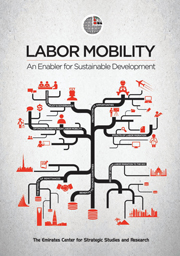Book contents
- Frontmatter
- Contents
- Figures and Tables
- Abbreviations and Acronyms
- Foreword
- Introduction
- 1 The Development Impacts of Temporary Migration and the Protection vs. Opportunities Trade-off
- 2 The Economic Development Benefits of Human Mobility to Source Countries
- 3 The Effects of Remittances
- 4 Recessions and Remittances in Home and Host Countries: An Overview
- 5 Seize the Spotlight: A Case for GCC Engagement in Research on the Effects of Labor Migration
- 6 Migration Policy and Governance in the GCC: A Regional Perspective
- 7 Optimizing benefits from Labor Mobility: The Case for Research Collaboration between Bangladesh and the GCC
- 8 Drivers of Development: The Impact of Indian Labor Migration to the GCC
- Contributors
- Notes
- Bibliography
- Index
1 - The Development Impacts of Temporary Migration and the Protection vs. Opportunities Trade-off
Published online by Cambridge University Press: 05 September 2014
- Frontmatter
- Contents
- Figures and Tables
- Abbreviations and Acronyms
- Foreword
- Introduction
- 1 The Development Impacts of Temporary Migration and the Protection vs. Opportunities Trade-off
- 2 The Economic Development Benefits of Human Mobility to Source Countries
- 3 The Effects of Remittances
- 4 Recessions and Remittances in Home and Host Countries: An Overview
- 5 Seize the Spotlight: A Case for GCC Engagement in Research on the Effects of Labor Migration
- 6 Migration Policy and Governance in the GCC: A Regional Perspective
- 7 Optimizing benefits from Labor Mobility: The Case for Research Collaboration between Bangladesh and the GCC
- 8 Drivers of Development: The Impact of Indian Labor Migration to the GCC
- Contributors
- Notes
- Bibliography
- Index
Summary
Restrictions on the international movement of labor are the largest distortions in the world economy, with estimated gains from the elimination of these barriers often in the range of 50–150 percent of world GDP. These barriers make increased migration the most effective mechanism to rapidly increase incomes of people from poor countries, since cross-border price wedges for similar labor are up to 1,000 percent. But the existence of these barriers also attests to the fact that increased international migration is controversial, with migrant-receiving countries worried about the costs of assimilating workers and their families, and migrant-sending countries worrying about the permanent loss of talented workers and the externalities they are presumed to create. Temporary or circular migration programs are seen as a way of overcoming such concerns and enabling poorer, less-skilled workers to benefit from the higher incomes to be earned abroad as part of a “triple-win”, whereby migrants, the sending country, and the receiving country all benefit.
There are several hundred of these bilateral temporal workers agreements worldwide, with the number increasing rapidly in recent years. Even a decade ago, it was noted that there were over 170 bilateral agreements amongst just the OECD countries, with a similar number within Latin America.
- Type
- Chapter
- Information
- Labor MobilityAn Enabler for Sustainable Development, pp. 29 - 48Publisher: Emirates Center for Strategic Studies and ResearchPrint publication year: 2013



